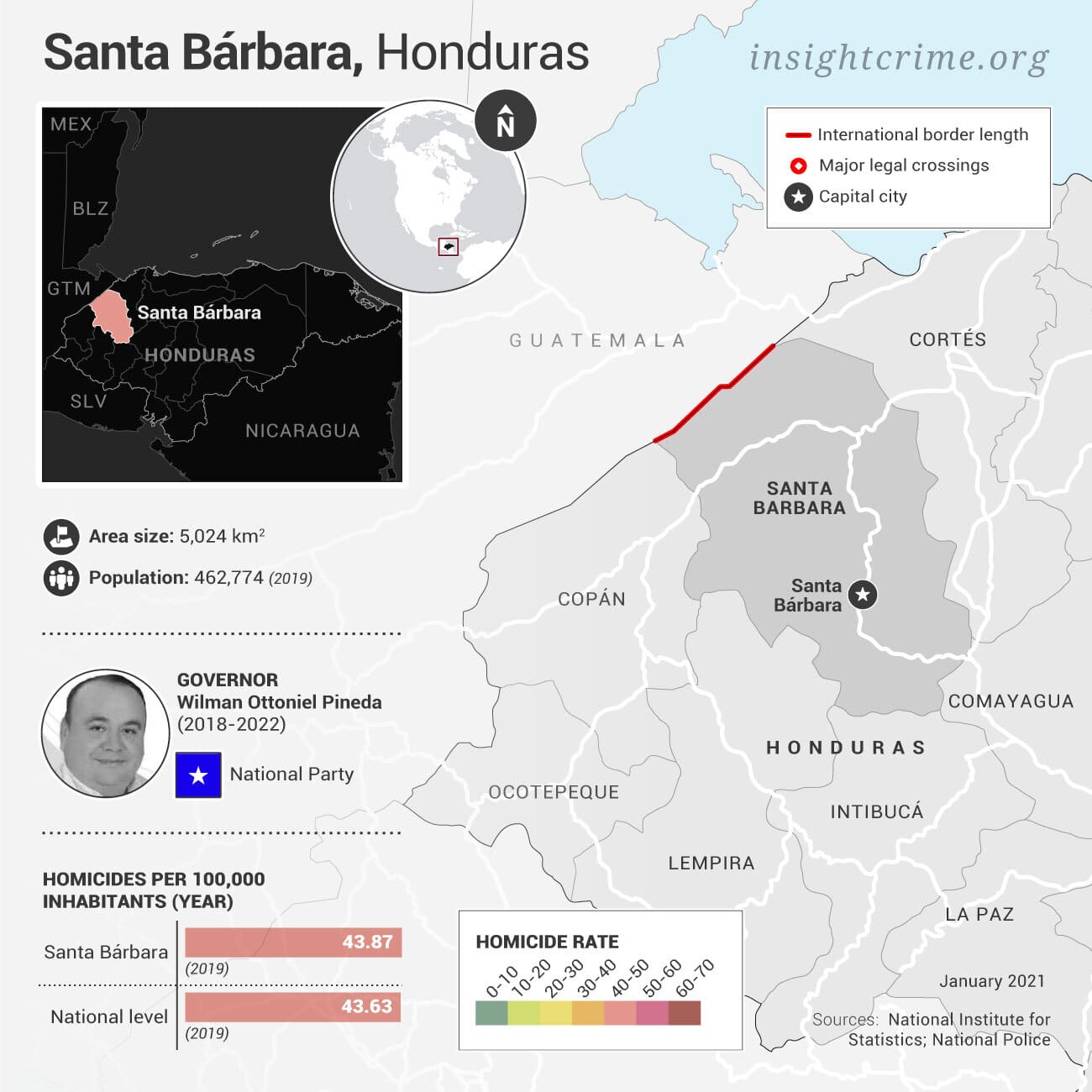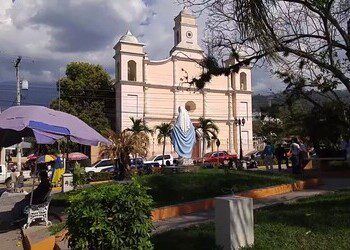Santa Bárbara sees its fair share of narcotics seizures and has played host to major drug trafficking groups such as the Valle Clan. Sandwiched between Copán and Cortés – two notorious hotspots for drug trafficking – the department is an essential part of the cocaine smuggling route linking the Honduran Atlantic with the Guatemalan border.
The road connecting San Pedro Sula and Chiquimula, Guatemala, passes through the department and is used by criminal groups to transport marijuana and cocaine. There are also some signs of cocaine and marijuana production, albeit on a small scale.
Santa Bárbara also houses a maximum-security prison, known as El Pozo (The Pit), where inmates include members of the Mara Salvatrucha (MS13) and Barrio 18 street gangs, and where firearms have been used to carry out assassinations – including of the jail’s director.
Departmental officials have faced accusations of drug trafficking and corruption, including Mario Pérez, a Santa Bárbara congressman and an alleged ally of convicted drug trafficker, Juan Antonio “Tony” Hernández.


Criminal Actors
Barrio 18: The gang maintains a presence in the department, including in the El Pozo prison, and it engages in extortion and local drug-peddling.
MS13: Members of the MS13 have been arrested on suspicion of extortion, illegal arms possession – including AK-47s – and local drug distribution within the department of Santa Bárbara. Like rival gang Barrio 18, MS13 members are also among those incarcerated in the department’s El Pozo prison.
The Valle Clan: Though authorities have largely taken down drug trafficking groups like the Valle Clan, there is still a presence of less structured criminal organizations, possibly remnants of the Valles, that continue exercising control over the drug trafficking routes that pass through the department. Their influence stretches to the departments of Ocotepeque, Lempira and Copán. In September 2018, authorities seized 500kg of cocaine in Santa Bárbara, which allegedly belonged to the Valle Clan.
Criminal Economies
Arms Trafficking: The department is a crossroads for all types of illicit products, including drugs and weapons. The CA-4 highway passes through the department and connects San Pedro Sula with Copán and the Guatemalan border. This is a key smuggling route. However, there is not enough evidence to indicate a large-scale arms trafficking economy. In 2019, authorities seized 209 firearms in Santa Bárbara, including small arms and larger weapons like automatic rifles.
Cocaine: All cocaine shipments transiting through northern Honduras and smuggled into Guatemala via Copán – a major drug trafficking hub – must pass through Santa Bárbara first, making it a highly lucrative economy. Seizures, however, are generally small. In 2019, Honduran authorities did not even seize 1 kilogram of cocaine. The previous year, they seized 500 kilograms.
Cannabis: There is some evidence of small-scale marijuana production and local consumption. The El Pozo prison is also located within the department, and is a center for cannabis consumption. As with cocaine, seizures have been modest. In 2019, authorities in Santa Bárbara eradicated just 12 plants of cannabis and seized just 10.6 kilograms of the drug.
Environmental Crime: There is no evidence of illegal wildlife trafficking in Santa Bárbara, however there were some timber seizures in 2019, including species such as mahogany, cedar, Guanacaste, laurel, pine and quebracho. The department’s forests are among those worst-affected by deforestation in Honduras, which suggests that at least some small-scale illegal logging occurs in Santa Bárbara.
Human Trafficking: There are some indications that human trafficking occurs at a small scale in Santa Bárbara. Criminal networks have recruited women and girls for sexual exploitation both within and outside the department. Santa Bárbara is also part of an important route for smuggling national and foreign migrants, who are vulnerable to human trafficking networks.
Human Smuggling: Santa Bárbara has a strategic location as crossroads between migrant hub San Pedro Sula and the border with Guatemala. In 2019, around 5,600 Honduran migrants returned to the department after being deported from the United States and Mexico, only a percentage of those who made the trip. Given the price of hiring a smuggler in the area (roughly $8,000), this appears to be a lucrative economy, reaching into the tens of millions.
Mineral Resources: In 2016, authorities carried out a series of operations in Santa Bárbara, with the aim of investigating illegal gold extraction from the Bobo, Chiquila and Tarros rivers. This led to multiple seizures of mining equipment, including diggers, instruments for extracting gold, and extraction pumps. Therefore, we estimate that there is at least a small criminal economy in the department, dedicated to the extraction and commercialization of gold.
Extortion: There is minimal reported extortion in Santa Bárbara, but some merchants and transport workers have been targeted by members of the MS13. A former governor and a former municipal judge from the San Luis municipality were also targeted by extortion rings in the department. Extortion networks are reportedly managed from behind bars, specifically from the El Pozo prison. This includes members of Barrio 18.
Sources: This profile is based on three field trips to Tegucigalpa and field trips to departments neighboring Santa Bárbara, such as Cortés, Copán, Lempira and Intibucá. InSight Crime interviewed representatives of the Attorney General’s Office, representatives of the Mission Against Corruption and Impunity in Honduras (MACCIH), military officers, national and local police officers, migration officials, human rights activists, and local journalists, most of whom requested anonymity. InSight Crime also drew from information provided by the United Nations Office on Drugs and Crime (UNODC), the Honduran National Police, the Honduran National Institute for Statistics, and the local press.

